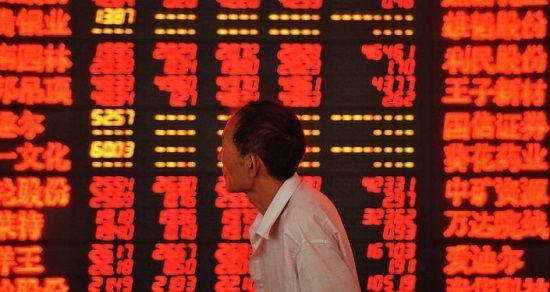Markets react to North Korea’s latest missile launch over Japan last night.
Here are 4 tips for today's trading. This will help you decide where you should invest and what to look for:
Markets react to North Korea’s latest missile launch over Japan last night.
Here are 4 tips for today's trading. This will help you decide where you should invest and what to look for:
1. North Korea troubles continue

North Korea fired a missile during early Asian hours that flew over Japan and landed in the Pacific about 1,180 kilometers off the northern region of Hokkaido, in a sharp escalation of tensions on the Korean peninsula. The last time a projectile from the hermit state flew over Japan was 2009.
The U.S., Japan and South Korea asked for a United Nations Security Council meeting to discuss the test, diplomats said. A meeting of the 15-member Security Council would be held later in the day, they said.
Global markets were shaken earlier this month after President Donald Trump cautioned that North Korea would be met with "fire and fury" if it continued to make threats against the U.S.
Pyongyang responded by saying it was considering a strike on Guam, a U.S. territory, although it later somewhat backed down.
2. Global stocks colored red

Global stock markets tumbled in risk-off trade, after North Korea fired a missile that passed over northern Japan, the latest act of provocation by Pyongyang that has ramped up global tensions.
Stock markets across Asia ended lower, with benchmarks in Tokyo and Seoul falling sharply.
In Europe, shares slumped more than 1% to their lowest in six months, with almost all major bourses across the region deep in negative territory.
Meanwhile, U.S. stock futures pointed to a significantly weaker open on Wall Street later in the day, with the major benchmarks down between 0.6%-and-1%. The VIX, also known as Wall Street's fear index, jumped almost 24% to 13.98.
Elsewhere, Oil prices struggled to bounce back from the prior session's heavy losses, while gasoline futures eased back from their highest since July 2015, as energy markets continued to weigh the damage from Tropical Storm Harvey.
Massive floods caused by Harvey forced several refineries to close along the U.S. Gulf Coast, while heavy rains were spreading into the greater Houston area, which has already been hit by catastrophic flooding.
3. Investors rush to safe-havens

Traditional safe-haven assets like Gold, the JPY and CHF were all in demand, as geopolitical concerns mounted after the latest North Korea missile launch.
Gold prices jumped around 1.2% at $1,330.62, a level not seen since November 9. Meanwhile, the dollar slumped around 0.7% against the yen to 108.50 after touching a more than four-month low of 108.34 earlier.
The greenback was also lower against the Swiss franc, with USD/CHF falling 1.1% to a one-month trough of 0.9450. Investors also rushed to the safety of U.S. Treasuries, pushing down the 10-year yield to a nine-month low of 2.086%.
4. Euro breaks $1.20 level

The Euro rose to its highest level since January 2015, as traders continued to buy the single currency after European Central Bank President Mario Draghi did not express concern about its recent rise in his speech at Jackson Hole.
The euro was last at 1.2058 against the dollar, up 0.7%, after touching a high of 1.2069 earlier, a level not seen since January 2015.
It also rose to a fresh 8-year peak against the British pound, with EUR/GBP last at 0.9305.
Meanwhile, the U.S. dollar index, which measures the greenback’s strength against a trade-weighted basket of six major currencies, was down 0.6% at 91.62 after falling as low as 91.56 earlier, the weakest since January 2015.


